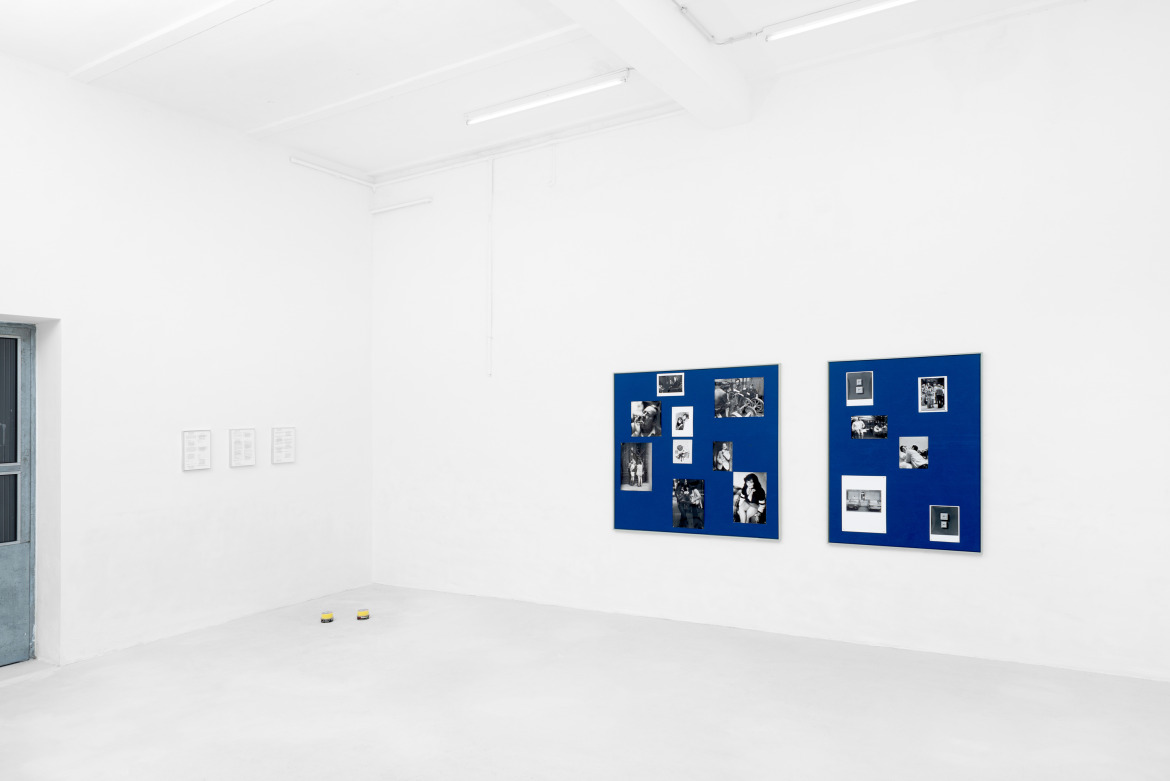
Alltag und Epoche, Installation view, EXILE Erfurt, 2024

Sung Tieu, Work contract, 2021, Set of 3 documents, Stamps on digital print, each 33 x 22 cm. Courtesy of the artist and Sfeir-Semler Gallery Beirut/ Hamburg
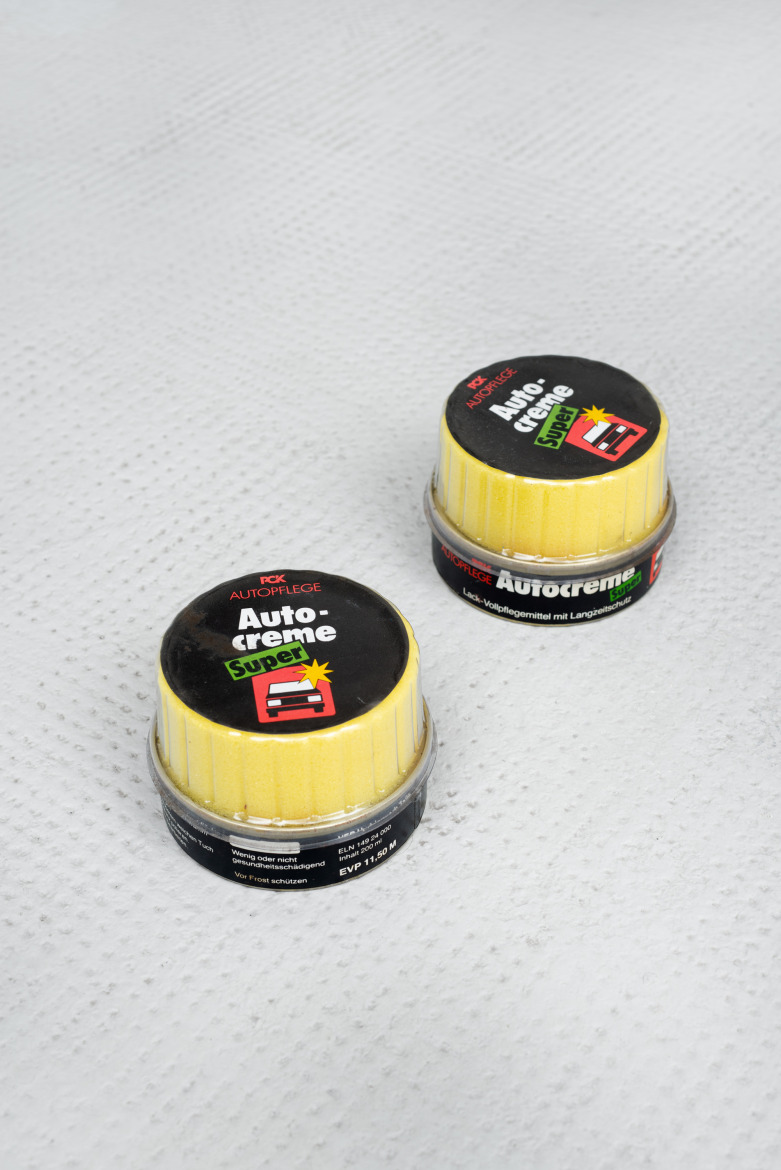
Sung Tieu, Super, 2020, Autocreme from VEB Hydrierwerk Zeitz, 14 x 10 x 10 cm. Courtesy of the artist and Sfeir-Semler Gallery Beirut/ Hamburg
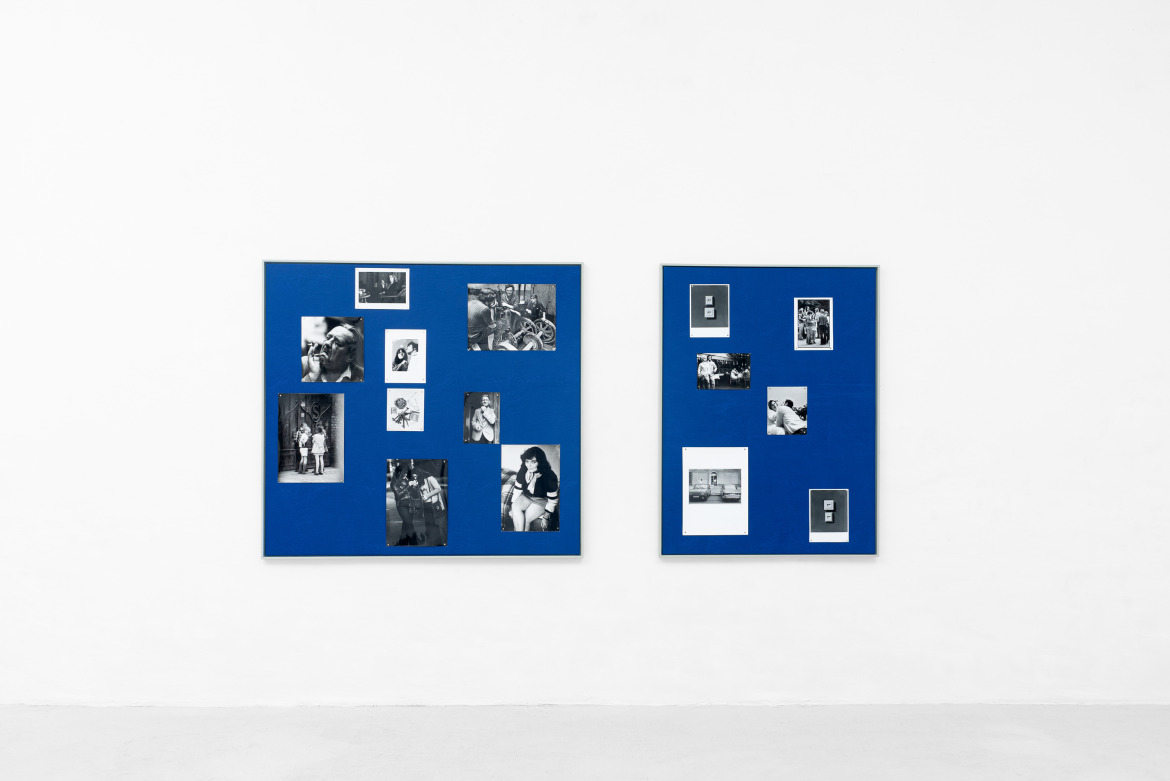
Wilhelm Klotzek, Berliner Zwischenlösung, 2013, silver-gelatin prints from the archive of Peter Woelck on fake leather in wooden frame, left, 134 x 130 cm, right, 134 x100 cm. Courtesy of the artist and Klosterfelde Edition, Berlin
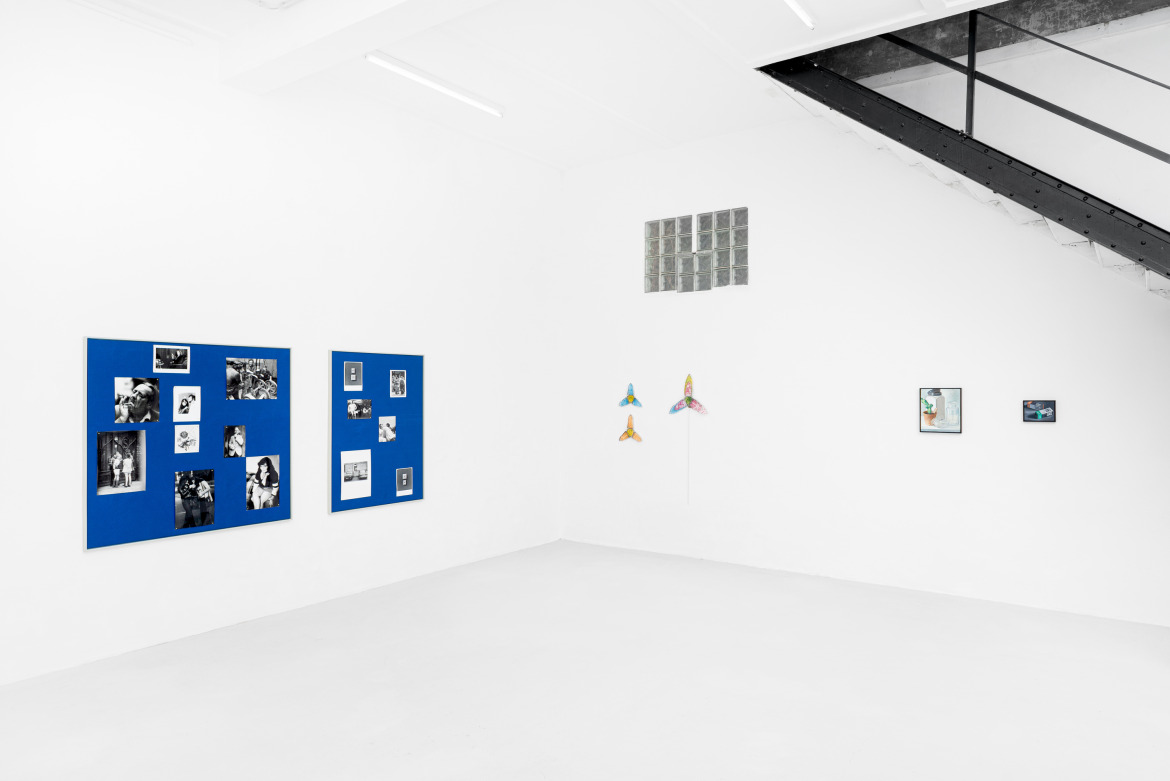
Alltag und Epoche, Installation view, EXILE Erfurt, 2024

Jasmin Werner, Carried away 1-3, 2022, screws, nuts, aluminum, wire, eyelet, printed mesh fencing, 31,5 cm x 33,5 cm & 122 x 46 cm. Courtesy of the artist and Damien & The Love Guru, Brussels/Zurich

Alltag und Epoche, Installation view, EXILE Erfurt, 2024
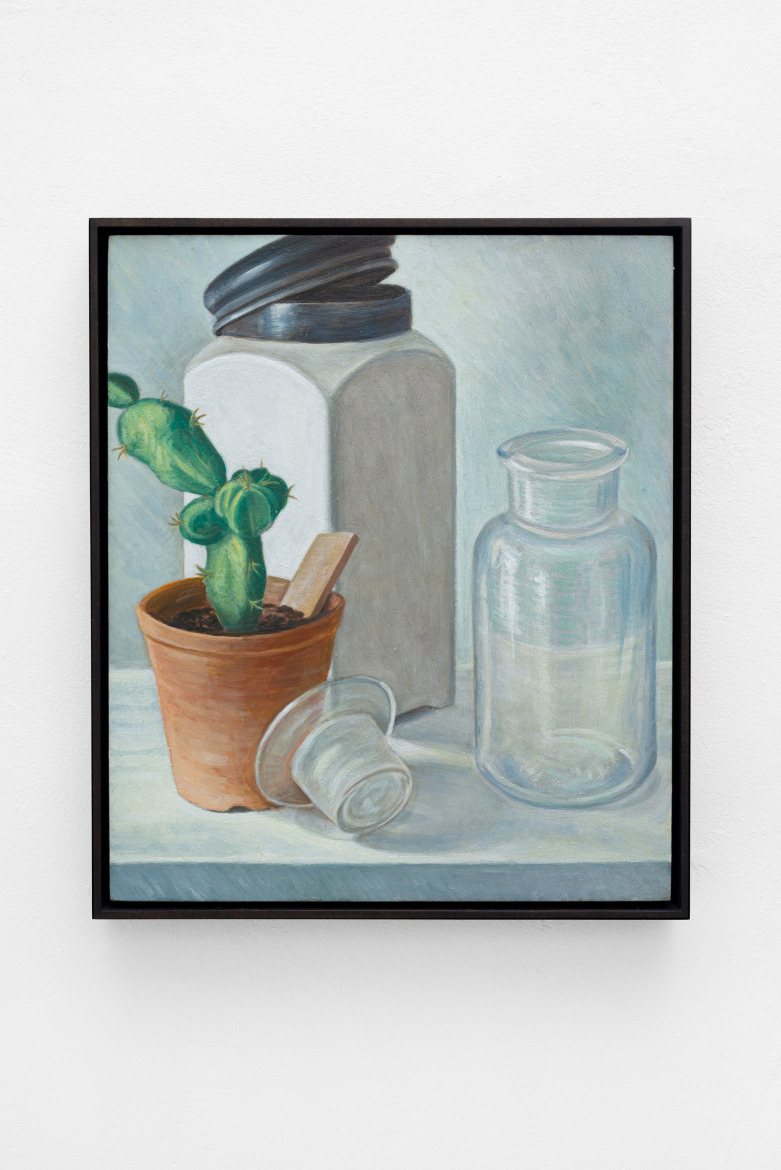
Oskar Schmidt, Weiße Gefäße (nach Petra Flemming), 2024, tempera and oil on wood, 35,5 x 30 cm. Courtesy of the artist and Galerie Tobias Naehring, Leipzig <br>
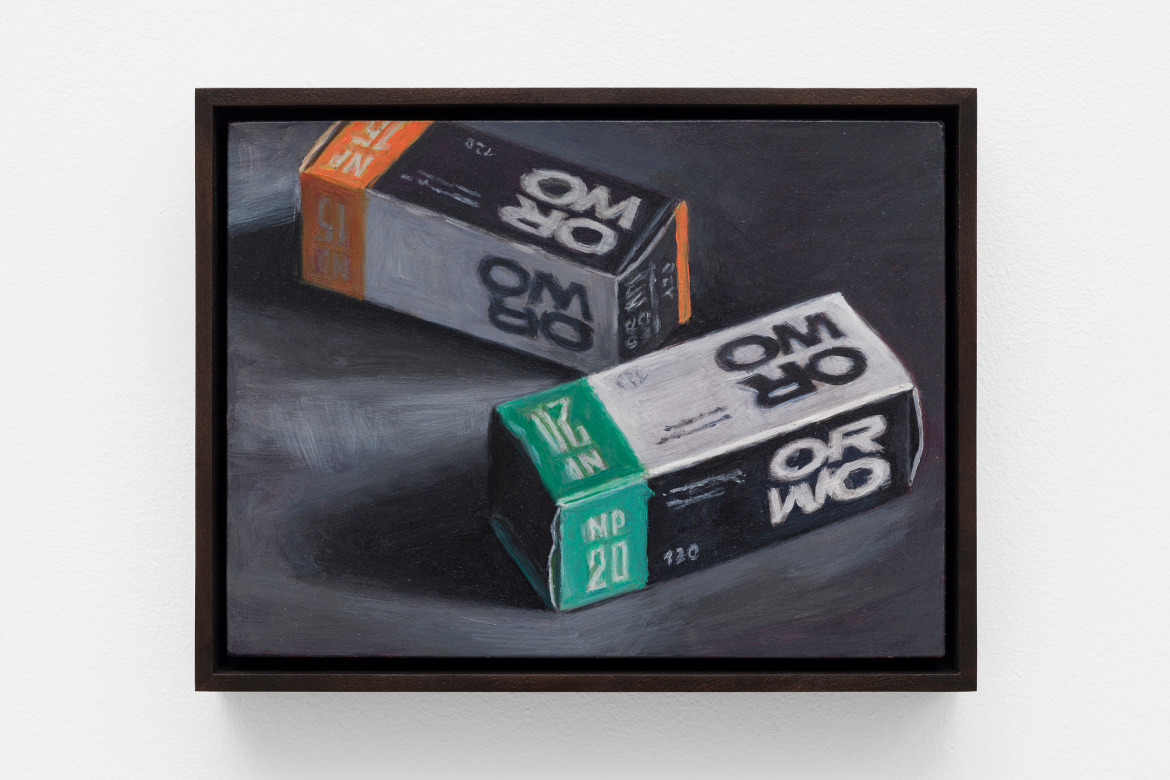
Oskar Schmidt, Stillleben mit ORWO-Schwarzweiß-Filmen (VEB Fotochemisches Kombinat Wolfen), 2023, tempera and oil on wood,15x20cm. Courtesy of the artist and Galerie Tobias Naehring, Leipzig
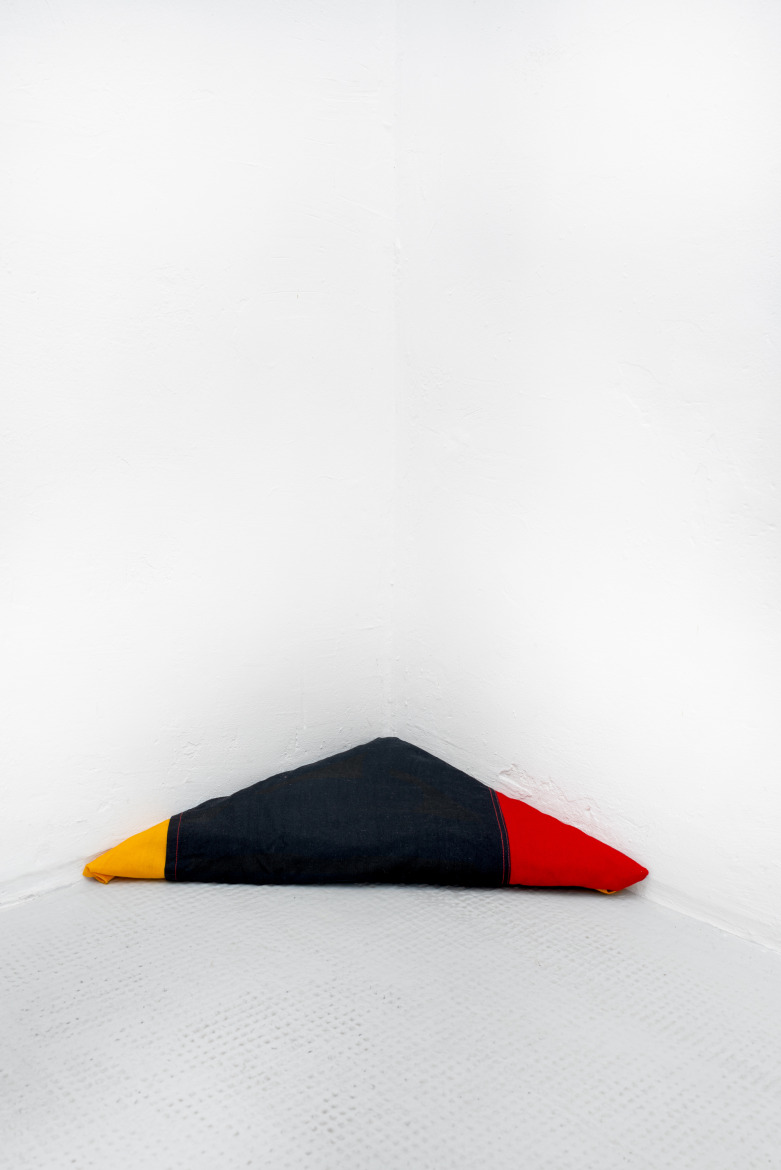
Erik Niedling, Folded Flag II (GDR), 2024, fabric, 6 x 59 x 28 cm

Alltag und Epoche, Installation view, EXILE Erfurt, 2024

Josefine Reisch, Exquisit, 2023, oil and acrylic on cotton damask, 180 x 130 cm. Courtesy of the artist and Galerie Noah Klink, Berlin

Doris Ziegler, Stillleben mit Zange, 1975, tempera and oil onboard, 64 x 74 cm. Courtesy of the artist
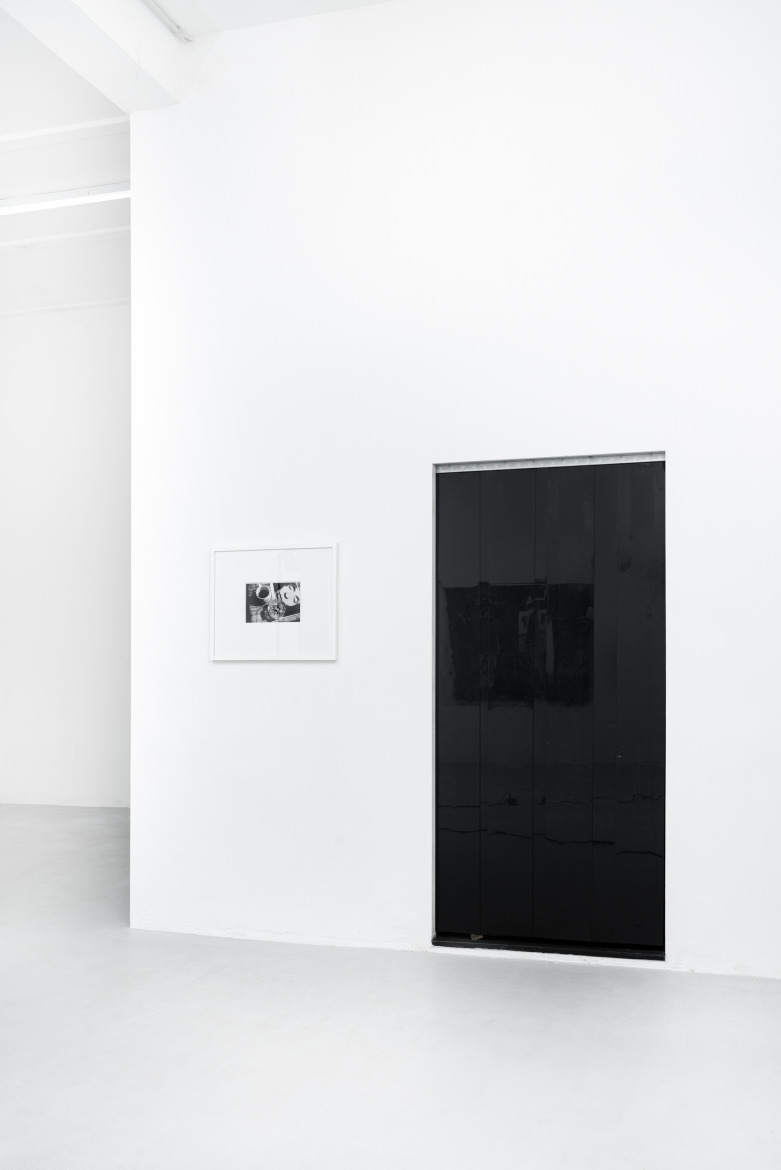
Alltag und Epoche, Installation view, EXILE Erfurt, 2023

Tina Bara, Mitropa, 1986, Inkjet print, 18 x 27 cm, printed 2016. Courtesy of the artist
Alltag und Epoche features works by different generations of artists who either lived and worked in the German Democratic Republic (GDR) or who deal with its heritage in their artistic practice. Invited by Oskar Schmidt participating artists are Tina Bara, Wilhelm Klotzek, Erik Niedling, Josefine Reisch, Oskar Schmidt, Sung Tieu, Jasmin Werner, and Doris Ziegler.
The catalogue of the 1984 overview exhibition, Alltag und Epoche (Everyday Life and Epoch), which featured fine arts from the first 35 years of the GDR (German Democratic Republic), states that “fine arts and everyday life are two sides of the same thing, two sides in the life of a social human being which cannot be separated.” As a result of “class struggles and social changes,” the socialist era of SED (Sozialistische Einheitspartei Deutschland) rule was inextricably linked to the bureaucratic management of the most mundane aspects of people’s lives in the GDR. What remains relevant today was even more true back then and with an enforced existential pressure: the personal is political.
That this exhibition, bearing the same name and held 35 years after the fall of the Berlin Wall, brings together works from various generations of artists who either lived in the GDR or deal with its legacy—in this case, the dichotomy of the private and the state in their artistic practice—is therefore not surprising, providing an artistic overview of an equal time frame.
The term Anti-Politik (Anti-politics) was first used in the 1970s by Hungarian writer György Konrád to characterise a retreat into the private sphere as a means of escaping the overtly standardised public space of ideological conformity under socialism. That one was apolitical did not follow from this. In order to avoid the all-pervasive state as much as possible and to fulfil their desire for self-determination within a limited personal framework—which then becomes politically charged—people instead withdrew into private spheres of life.
Although at the time retreating into the private sphere was seen to be an escape from overbearing political control and standardisation, we now live in an almost obsessively politicised age. Today, it is difficult to view withdrawing into one’s private life as an escape from politics in a society where politics permeates every aspect of existence; Specifically in the Eastern states of the former GDR, individuals seem to have moved from anti-politics to hyper-politics.
Making the most ideologically charged links between life in the GDR back then and life in the Federal Republic today, however, goes straight to the trench warfare of the East-West conflicts. Since the early years of reunification, the obsession with GDR art and daily life has been equally delegitimized, ignored, and has festered beneath the surface of popular consciousness. These linkages are highlighted in the exhibition Alltag und Epoche which also exposes the audience to creative interpretations of life in the GDR.
Three jugs, a water glass, and a set of pliers are shown in Doris Ziegler’s (*1949 in Weimar) 1975 painting Stillleben mit Zange. These objects are on one hand mundane and commonplace everyday objects, yet some of them, the jug on the left and the set of pliers are clearly distinct products of the Volkseigene Betrieb (VEB) Schmalkalden. The paintings of Oskar Schmidt (*1977 in Erlabrunn) are stylistically directly related to Ziegler. About forty years later, the two exhibited still-life paintings use the same specific painting technique for which Doris Ziegler as a member of the the Leipzig School of became known for. Using layers of egg tempera and oil glazes on a hardwood panel, Schmidt constructed a complex design that reflected ORWO black and white films, which were standard goods in the GDR. Although Otto Dix had been painting in this style since the 1920s, other Leipzig School painters, such as Doris Ziegler, took up the technique and further developed it during the 1970s. Petra Flemming (1944-1988) was another member of the Leipzig school. In one of the exhibited works Schmidt directly references Flemming’s 1975 painting Weiße Gefäße. Two partially open containers are positioned next to a cactus, forming another iconographic connection also to Ziegler’s motif. While Doris Ziegler’s work has lately earned recognition after 30 years of marginalisation in the new FDR (Federal Republic of Germany), Flemming and many other artists from the former GDR remain widely under-appreciated – a negative long-term impact of the (East) German – (West) German pictorial debate.
Josefine Reisch (*1987 in Berlin) painted on GDR damask fabric the faded word “Exquisit” – the name of the most expensive GDR clothing shops. Two different variants of a ship are seen below. In 1985, the cruise ship MS Astor was sold from West to East Germany and renamed to MS Arkona with the aim to serve as an exclusive holiday escape for exceptionally politically dependable comrades. Instead of everyday goods, Reisch collects symbols for the most exclusive leisure activities available under socialism.
If personal is political, then political is personal. Even the most mundane private affairs were never genuinely private in the GDR, especially in an artistic context, and one could never be certain that even the most private moments would remain so. The relationship between private and public, between inner withdrawal and exterior expression, were also “two sides of the same thing” and influenced the artistic perspectives in this exhibition. The exhibition’s chosen artists and works engage in a relationship with one another that crosses generations and, if you will, epochs.
Sung Tieu’s (*1987 in Hai Duong) artistic work focuses on the intersection between personal life experiences and state authority. Tieu, daughter of a Vietnamese contract worker who travelled to the GDR to work in a VEB steelworks in Freital, arrived in Germany with her mother in 1992 and was subjected to the state immigration machine’s excessive bureaucracy. The works and ready-mades presented here, like Schmidt’s paintings, have socio-political connotations of their own: car polish from VEB Hydrierwerk Zeitz is presented alongside a three-page work contract for Vietnamese workers. In her artistic practice, Tieu connects the personal history of her family, which is shaped by post-socialist transformation and reunification, with the structural aspects of a state in which issues such as bureaucracy, isolation, racism and surveillance were by no means resolved even after 1990.
Tina Bara’s (*1962 in Kleinmachnow) 1986 photograph from the series Lange Weile looks down onto the artist’s East Berlin kitchen table. On a floral tablecloth, a Mitropa cup with black coffee and an ashtray stand next to a black and white photograph taken by the artist Martin Claus, in which Bara herself can be seen with her eyes closed. Coffee, cigarettes, floral tablecloth, close your eyes, boredom. In a 2002 interview, curator Christoph Tannert compared his experiences as a young man in the GDR with his current situation in the reunified Federal Republic. In the GDR there was a “different time pulse, a different sense of time, a different rhythm of life”. Before 1990 he always found time to read entire art catalogs, whereas today the catalogs pile up unread on his desk. “We had a lot more time.”
Leisure time, everyday life, closing your eyes. Through the artistic processing in the exhibition, the objects of everyday life in the GDR become signifiers for this complicated world of life. 34 years later, at a time when it is still controversial to simply talk about everyday life in the GDR, everyday objects simultaneously become symbols of a renewed political charge. This unites the positions of Schmidt, Tieu, Ziegler and Bara – across generations and beyond the temporal boundaries of the GDR.
In the work Berliner Zwischenlösung by Wilhelm Klotzek (*1980 in Berlin) the different generations merge. He arranges the photographs of his father, the artist Peter Woelck (1948-2010), on fake blue leather. Commissioned works and everyday street scenes and objects – official and unofficial – are mixed and presented unlabeld. Similar to Tina Bara, Woelck documented his social environment in the alternative Prenzlauer Berg during the GDR era, embodiing Anti-Politik: by withdrawing from public life and establishing alternative, decidedly non-political spheres – a kind of “second culture” existed in which people could exercise passive resistance through their private way of life.
Jasmin Werner (*1987 in Troisdorf) negotiates the afterlife of the architectural symbol of the “first,” official GDR culture in her work. During the dismantling of the Palast der Republik, large quantities of construction material were removed for reprocessing, with some of the steel being later reused to build the Burj Khalifa in Dubai. In Werner’s sculptural wall objects, the curved aluminum parts represent the cross section of the Burj Khalifa, while building protection nets are printed with the floor plan of the Palast der Republik. The historical and ideological significance of both buildings converges exclusively in their materiality.
The GDR saw itself at the beginning of the socialist era, after which the communist era would have commenced, bringing the the chronology of epochs to its final, desired state. In Erik Niedling’s (*1973 in Erfurt) work “Folded flag (GDR)”, the GDR flag, which was once omnipresent in the standardized public space, is neatly folded with its socialist symbols of hammer and sickle no longer visible. However, the exhibition Alltag und Epoche demonstrates that the debate of topics related to the political notion of the private life in the GDR is far from complete, and that it cannot be simply discarded in the linen closet like a no longer needed flag. After 30 years of marginalisation, the process of reconciling with everyday life and art in the GDR is only at its beginning.
Marlene Militz
→Read German original (PDF, 57kb)





























